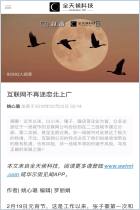
How Come the Most Popular New Consumer-Goods Brands Didn’t Come Out of First-Tier Cities?
Read or listen offline
Recommendation
While you were being dazzled by the newest tech trends, the hottest start-ups, and the most inspiring or threatening artificial intelligence innovation, several traditional retail brands of snacks and beverages have entered China’s brand scene from backstage. Zhou Hei Ya, a company that makes processed-duck snacks, has gone public in Hong Kong. Three Squirrels, which specializes in nut snacks, is now China’s largest snack brand. Hey Tea, a milk-tea chain store, commands two-hour queues all day every day. Besides overwhelming popularity, these brands have another trait in common: None of them originated in China’s first-tier cities. In this article from the WeChat channel Insights into New Consumption, retail expert Long Mao Jun explains why lower-tier cities offer better breeding grounds for consumer brands and advises venture capitalists to pay attention to the budding consumer brands in second- and third-tier cities. getAbstract recommends Long’s advice to entrepreneurs, investors, marketers and trend watchers.
Take-Aways
About the Author
Long Mao Jun is the founder and main writer of Insights into New Consumption, a WeChat wemedia account that reports on the consumer goods industry with a focus on consumption upgrade, start-ups and innovation.





















Comment on this summary or 开始讨论